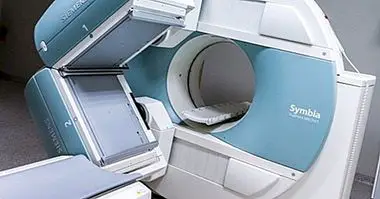Disease of the side: symptoms, causes and treatment
There are a lot of diseases in the world, many of which have accompanied us throughout history. Something as apparently simple and easy to treat today as a flu or an infection once supposed a death sentence for those who suffered it.
Thanks to the many scientific and technical advances, it has been possible to better understand and treat different conditions. But not only the explanation of the problems, their causes and treatments have evolved: largely due to the improvement of the understanding of the disorders and the different researches and conceptions of the pathology existing in different parts of the world have also been emerging and disappearing different ways of referring to them.
We have an example in what in its time was called disease of the side , which today could encompass and / or correspond to different diseases.
- Related article: "The differences between syndrome, disorder and disease"
The disease of the side: what was it referring to?
The disease of the side, sideways disease or lateralis pain is an old way of describing a disorder observed since antiquity characterized by the presence of a high level of pain in the abdominal area , being habitual that this one worsens with the movement or the effort and that to be accompanied by fever, gastrointestinal alterations, defecatory problems, alterations of the respiratory rate and arrhythmias.
This disease has generated a large number of deaths throughout history, until the discovery of their causes and the invention of effective treatments for their solution. Nowadays it is usually identified with a specific pathology, although Within the denomination could be agglutinated different affectations (since there are a large number of possible causes that generate abdominal pain and the general symptoms to which the concept refers). Although the name of the disease of the side is usually unusual nowadays, people who use this term can still be found.
- Maybe you're interested: "The 13 types of pain: classification and characteristics"
With what conditions can it correspond? Possible causes
The truth is that the term disease of the side, today, may seem somewhat generic given that it does not offer real information of its causes, but simply a more or less extensive area of the body where the problem is located. In this sense, the disease of the side may correspond or include different conditions within itself, among which the following stand out.
1. Appendicitis
It is probably the medical diagnosis with which the disease or side disease would correspond most. This disease, today well known and whose existence requires the removal of the appendix without usually great complications, was the cause of a large number of deaths during the antiquity and the Middle Ages .
This disease implies the existence of dilatation and inflammation of the appendix caused by an obstruction (which may or may not be the result of an infection, being the most frequent) that prevents proper drainage of intestinal mucus and that can eventually cause compression and the break of it. The clearest and most evident symptom is the localized pain in the side (specifically in the so-called McBurney point, in the lower right part of the abdomen), which may present with symptoms such as vomiting and nausea, fever and hyperthermia, and tremors.
If it is not treated, necrosis and infection of this tissue and the surrounding (including peritoneum) or it is even possible that the appendix ruptures, generating a hemorrhage of great importance. These are probably the causes that caused most of the deaths associated with the disease of the side.
2. Acute cholecystitis
Inflammation of the gall bladder, generated mainly by the presence of stones in said organ. Inflammation can lead to necrosis, suppuration and gangrene. It also generates pain in the side, besides being able to trigger other problems and complications. It can be complicated by peritonitis or pancreatitis, and it also has deadly potential .
- You may be interested: "Swollen glands: causes and warning symptoms"
3. Peritonitis
Inflammation of the peritoneum, usually due to a bacterial infection (septic) or to the accumulation of fluids and body fluids such as pus (aseptic peritonitis). The symptoms resemble those of the disease of the side: abdominal pain, fever, respiratory problems, bloating, vomiting and diarrhea or constipation . If left untreated, it can cause death.
4. Kidney lithiasis
This disease caused by the presence of kidney stones is another one that could be considered as a disease of the side. The excessive accumulation of these elements generates pain, and in the long run it can even generate those known as nephritic colic . However, it is less likely that the disease of the side refers to it due to its greater similarity with the previous ones.
What would medical treatment be like today?
Unlike in the Middle Ages, when the illness of the side ended with the death of a large number of people, nowadays there are more means to allow the overcoming of the diseases grouped in this disused category . Of course, it is not that the problem is innocuous: it is a problem that still has deadly potential if it is not treated.
Regarding the procedure to be used, the first step is obviously to diagnose the problem itself in a much more specific way. In this sense it is possible to make an exploration through touch to notice the presence of inflammation, but also it is possible to resort to techniques such as magnetic resonance imaging and contrast-enhanced radiographs . The use of blood and stool tests may reflect information of great relevance. Likewise, the use of techniques such as colonoscopy can also allow a more complete view of the state of the digestive tract.
Once detected the organ that fails and the problem presented, the treatment will vary according to their causes. Surgery may be used to remove damaged or affected parts, as in the case of appendicitis. If there is an infection, the administration of antibiotics will also be necessary.



















